by David Clarke | Jul 26, 2012 | All, Kenya, Places
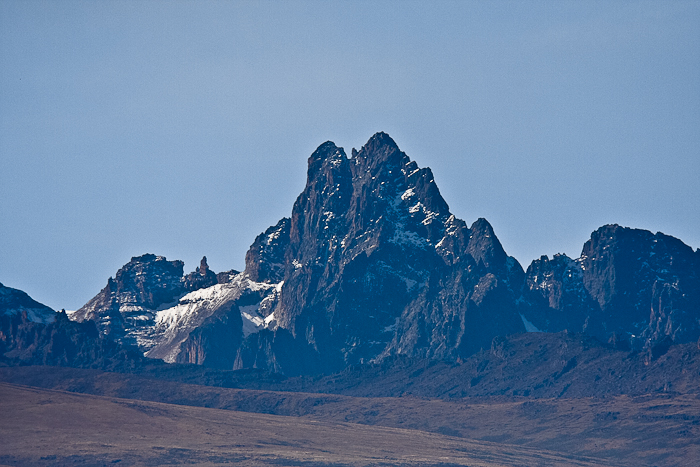
Mount Kenya is very rugged and staggering beautiful, its aspect changing dramatically as your viewpoint changes. This shot is taken from near Timau looking south-south-east towards the mountain, the higher of the two peaks – Bastian – being about twenty miles away. The view is ever-changing as clouds and mist role in and away, as snow falls around the peak and as the light and shadows alter throughout the day. From this viewpoint, the sheerness of the peaks is very vivid.
Mr Wikipedia has this to say (in part) about the mountain (but for more, google Mount Kenya and you will find a wealth of info):
Mount Kenya is the highest mountain in Kenya and the second-highest in Africa, after Kilimanjaro. The highest peaks of the mountain are Batian (5,199 metres (17,057 ft)), Nelion (5,188 metres (17,021 ft)) and Point Lenana (4,985 metres (16,355 ft)). Mount Kenya is located in central Kenya, just south of the equator, around (150 kilometres (93 mi)) north-northeast of the capital Nairobi. Mount Kenya is the source of the name of the Republic of Kenya.
Mount Kenya is a stratovolcano created approximately 3 million years after the opening of the East African rift. It was covered by an ice cap for thousands of years. This has resulted in very eroded slopes and numerous valleys radiating from the centre. There are currently 11 small glaciers. The forested slopes are an important source of water for much of Kenya.
There are eight vegetation bands from the base to the summit. The lower slopes are covered by different types of forest. Many species are endemic to Mount Kenya such as the lobelias, the senecios and the rock hyrax. An area of 715 square kilometres (276 sq mi) around the centre of the mountain was designated a National Park and listed as a UNESCO World Heritage Site in 1997. The park receives over 15,000 visitors per year.
Canon 1DMkII with Canon 300mm L IS lens and Canon 1.4 extender. ISO320 1/5000 at f4.5
by David Clarke | Jul 24, 2012 | All, Japan, Places
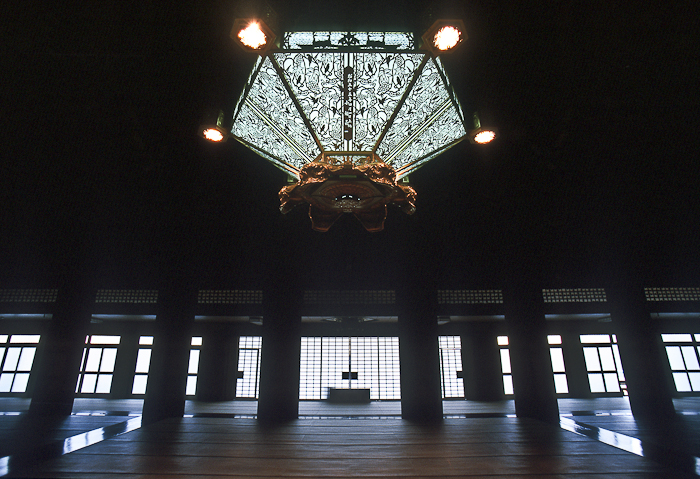
Located in Kyoto, Japan, the Nishi Honganji (West Honganji) was built in 1591 by Toyotomi Hideyoshi, after the sect’s former head temple, Ishiyama Honganji in Osaka had been destroyed by Oda Nobunaga owing to the temple’s interference in politics. Nishi Honganji is the head temple of the Honganji faction of the Jodo-Shin sect with over 10,000 subtemples across the country and 200 temples overseas.
Nishi Honganji’s two largest structures are the Goeido Hall, dedicated to Shinran, the sect’s founder, and the Amidado Hall dedicated to the Amida Buddha, the most important Buddha in Jodo-Shin Buddhism.
This shot was taken as a transparency in 2002. Since then, the temple has undergone a renovation, but from more recent pictures on the internet, it looks much the same.
Canon EOS 3 camera with Canon f2.8L 17-35mm lens. Konica 100 transparency film
by David Clarke | Jul 22, 2012 | All, Kenya, Places
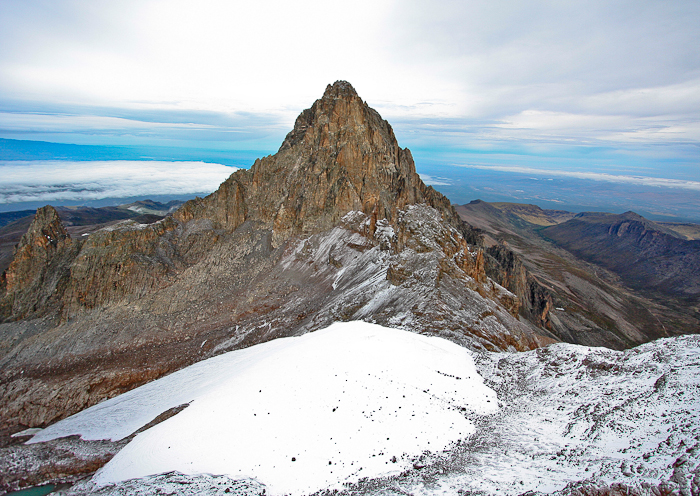
If you have ever stood in the foothills of Mount Kenya and looked in wonder at its peaks, this is what it is like from closer up – this shot was taken from a helicopter on a trip around the mountain.
We had ascended from the north and having reached the peaks, circled them anti-clockwise.
For this shot we were south-east of Nelion, (5,188 metres (17,021 ft)) the the lower of the two peaks – Batian, the higher (5,199 metres (17,057 ft)) is hidden behind it.
In the foreground is the Lewis Glacier, the largest on the mountain, although like the others it is getting smaller – it is estimated that there will be no more glaciers up there within 30 years.
To the left of the glacier at the bottom left of the image is a tarn called the Curling Pond. This is at 4790 metres (15715 ft)), from which data you get a handle on the scale of the image.
Mr Wikipedia has this to say (in part) about the mountain (but for more, google Mount Kenya and you will find a wealth of info):
Mount Kenya is the highest mountain in Kenya and the second-highest in Africa, after Kilimanjaro. The highest peaks of the mountain are Batian (5,199 metres (17,057 ft)), Nelion (5,188 metres (17,021 ft)) and Point Lenana (4,985 metres (16,355 ft)). Mount Kenya is located in central Kenya, just south of the equator, around (150 kilometres (93 mi)) north-northeast of the capital Nairobi. Mount Kenya is the source of the name of the Republic of Kenya.
Mount Kenya is a stratovolcano created approximately 3 million years after the opening of the East African rift. It was covered by an ice cap for thousands of years. This has resulted in very eroded slopes and numerous valleys radiating from the centre. There are currently 11 small glaciers. The forested slopes are an important source of water for much of Kenya.
There are eight vegetation bands from the base to the summit. The lower slopes are covered by different types of forest. Many species are endemic to Mount Kenya such as the lobelias, the senecios and the rock hyrax. An area of 715 square kilometres (276 sq mi) around the centre of the mountain was designated a National Park and listed as a UNESCO World Heritage Site in 1997. The park receives over 15,000 visitors per year.
Image taken on a Canon 40D with a Canon EFS 10-22 mm lens at 10mm; ISO 400 f4 1/1000
by David Clarke | Jul 19, 2012 | All, Dubai, Places
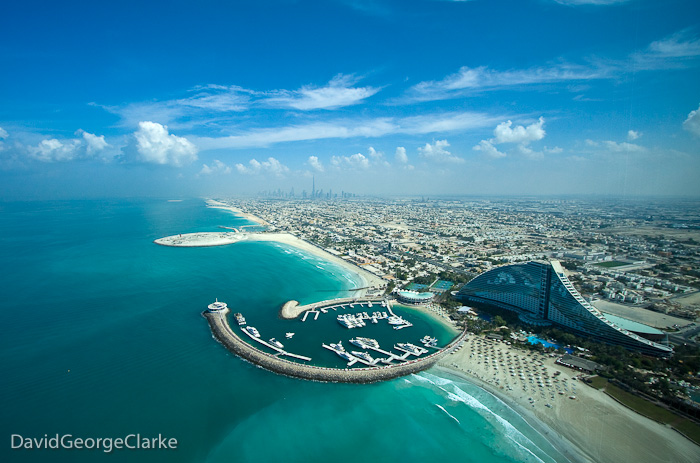
Dubai is a city of superlatives – highest, biggest, largest, most etc. This shot, looking along the coast towards downtown Dubai, was taken on an unusually clear day in November 2008 from the Skyview Bar of the Burj Al Arab hotel (a building itself brimming with superlatives). On the horizon, about 20km away, can be seen the then still-to-be-completed Burj Dubai soaring over 800 metres into the sky (burj is ‘tower’ in Arabic). At some 162 storeys, it dwarfs the mere 60-storey blocks around it!
In the forground is the Jumeirah Beach Hotel and the 360 bar at the end of the causeway.
Canon 40D with 10-22mm EFS lens at 10mm; ISO 200 f10 1/250. Bit of colour temperature adjustment on PS since the shot was taken through tinted glass.
by David Clarke | Jun 30, 2012 | All, Kenya, Places
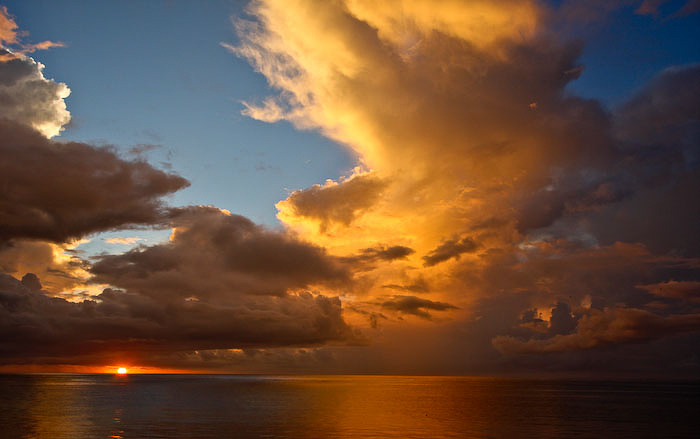
The sun rising out of the Indian Ocean at the beginning of the rainy season is breathtakingly beautiful. Over a twenty minute period before the sun appears, the sky is a subtle and ever-changing display of greys and silver, tinged with increasingly dramatic hues of red, orange and blue as the growing light plays on the clouds. Then the sun itself moves dramatically into view, adding its own brilliance to the scene.
This shot was taken at 6.28 a.m. on 21 March 2010 at Mtwapa beach, near Mombasa, Kenya.
Canon EOS 40D with Canon 10-22mm EFS lens at 22mm; ISO 200 f10 1/100








